Myriad Threads
Wood, recycled concrete formwork, sanhé soil (oyster shells, glutinous rice paste, syrup, rice husks), cement, red copper, pencil and pastel on paper. 1000 x 415 x 215 cm
2025
萬縷
木材、回收水泥模板、三合土(牡蠣殼、糯米漿、糖漿、粗糠)、水泥、紅銅、鉛筆、粉彩、紙本
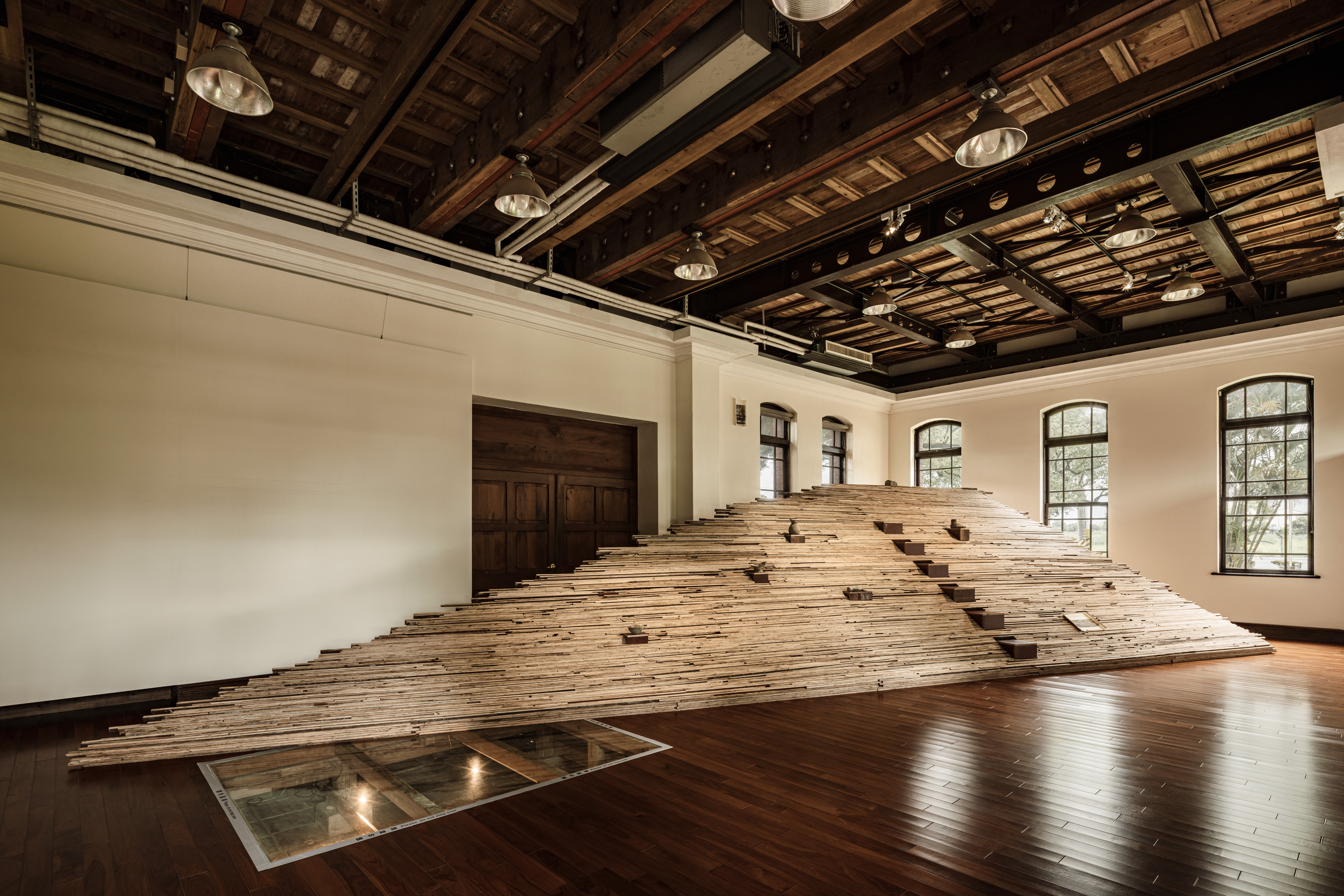




The relentless advance and retreat of the sea have sculpted the landscape over millions of years. Flooding rivers deposit sediments that gradually nurture islands, which eventually merge into vast expanses of land. On ancient maps, the waxing and waning of coastlines trace ever-changing geographical patterns, reflecting the historical journey of humanity living in tandem with nature.
Within these layered and intertwined landforms, the soil becomes a vessel of memory, accumulating the wisdom of our ancestors. It records the traces of human migration, cultivation, and settlement along the border between sea and land, concealing the past within its layers. Remnants of ancient artifacts endure, much like the winding waterways on old maps and the tightly intertwined plant roots that mend fractures and allow what is broken to persist.
By constructing countless embankments and weaving myriad threads, I build earthen walls and accumulate stratified landscapes. Employing age-old building materials such as oyster shells, sugar water, and glutinous rice, I blend the human body with artifacts. Just as mouths, lips, necks, shoulders, abdomens, bases, and feet define various parts of the human form, so too do these artifacts bear the imprints of life.

On the structure, I placed small sculptures of body parts and vessels made from sanhé soil — a traditional building material composed of oyster shells, sticky rice, and syrup. Today, traces of this ancient material can still be found at Anping Old Fort and Madou Old Port. They all relate to the idea of containers — embankments, pots, and even the human body — which hold water, memory, and feeling.
Sculptures made of sanhé soil , modeled after ancient vessels and combined with human body parts featuring shell-like textures.
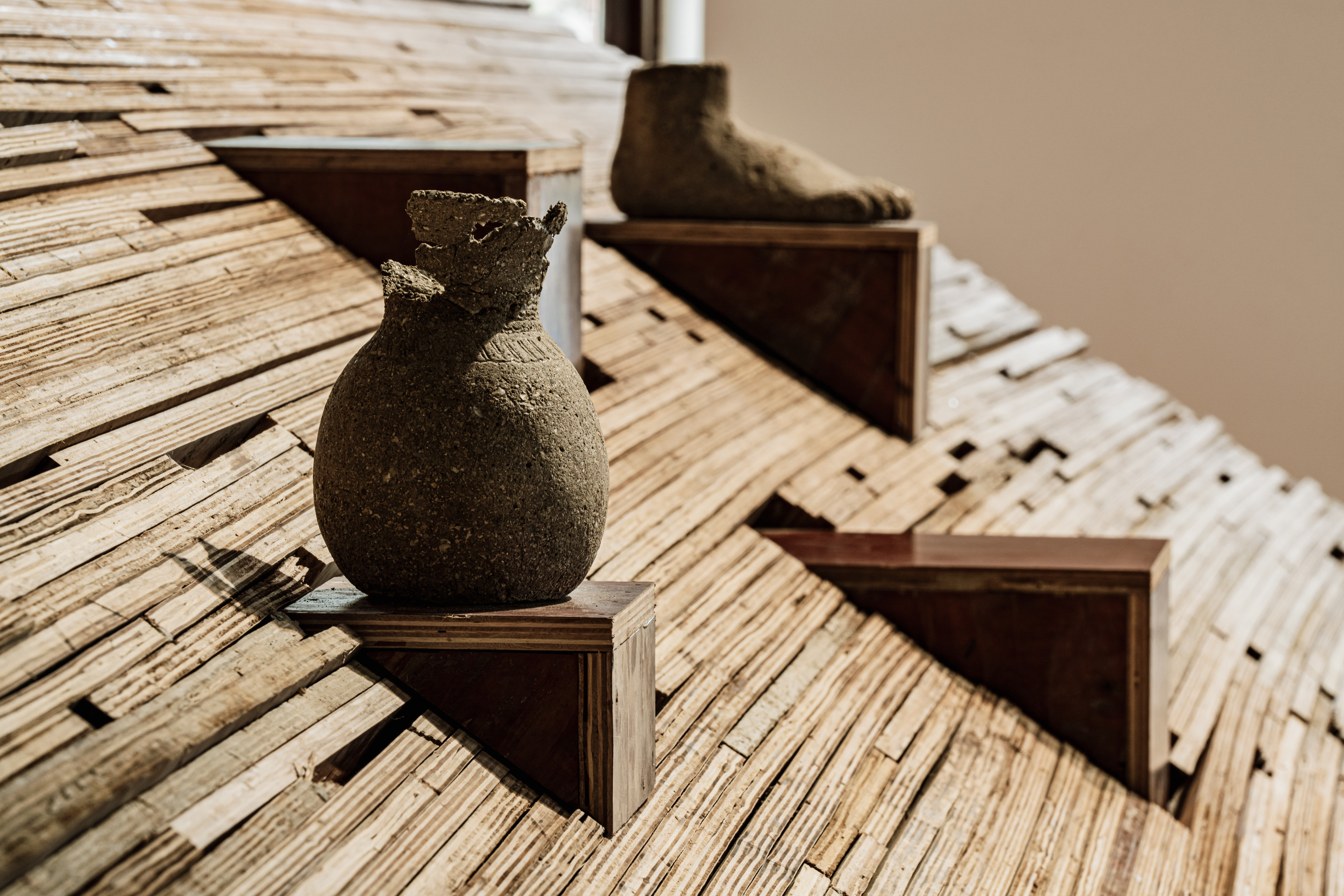 Wide-mouthed, long-necked, flat-bottomed bottle,
13.3 x 13.3 x 18 cm
Wide-mouthed, long-necked, flat-bottomed bottle,
13.3 x 13.3 x 18 cm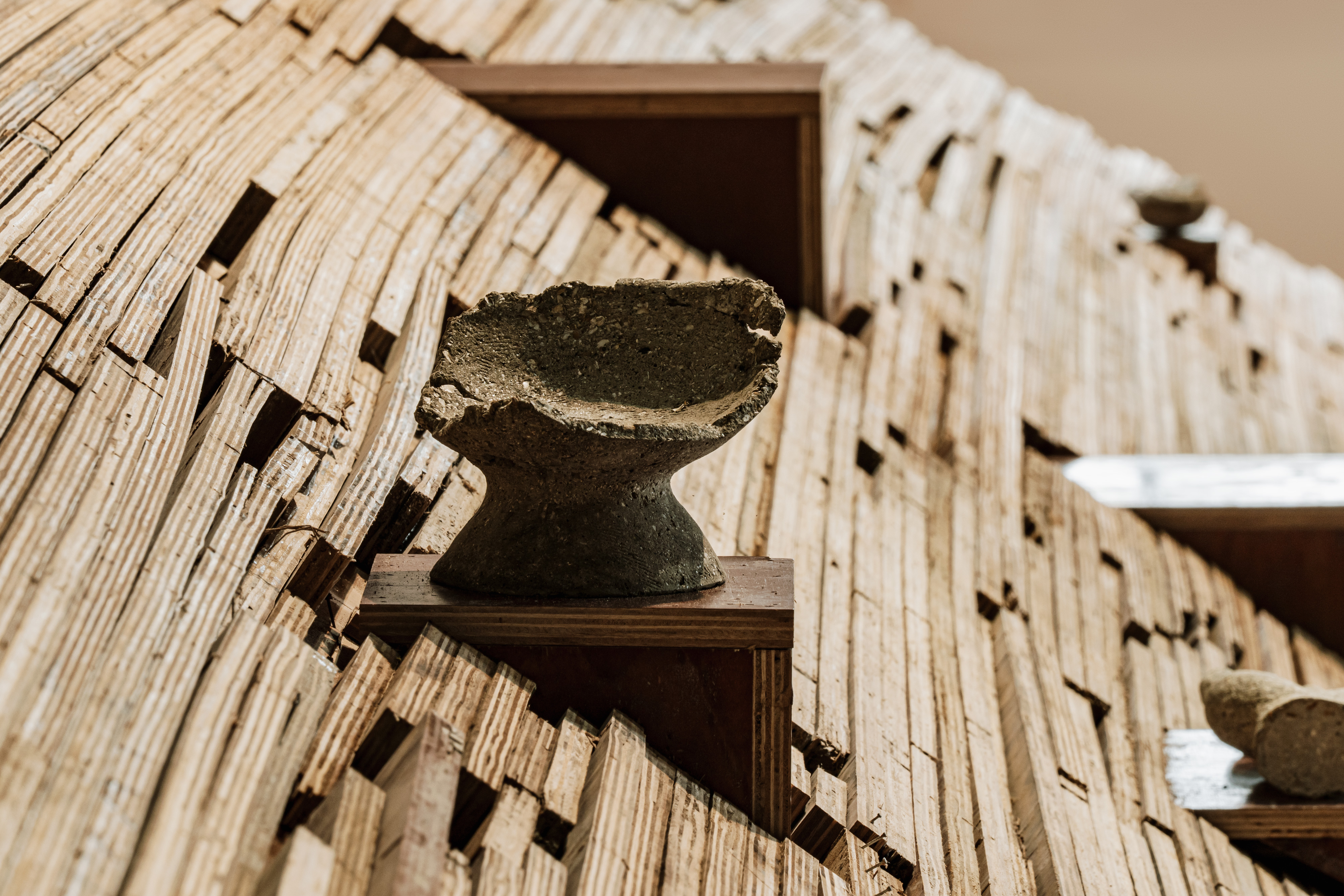 Bowl with high ring foot, 17.5 x 14.3 x 10.9 cm
Bowl with high ring foot, 17.5 x 14.3 x 10.9 cm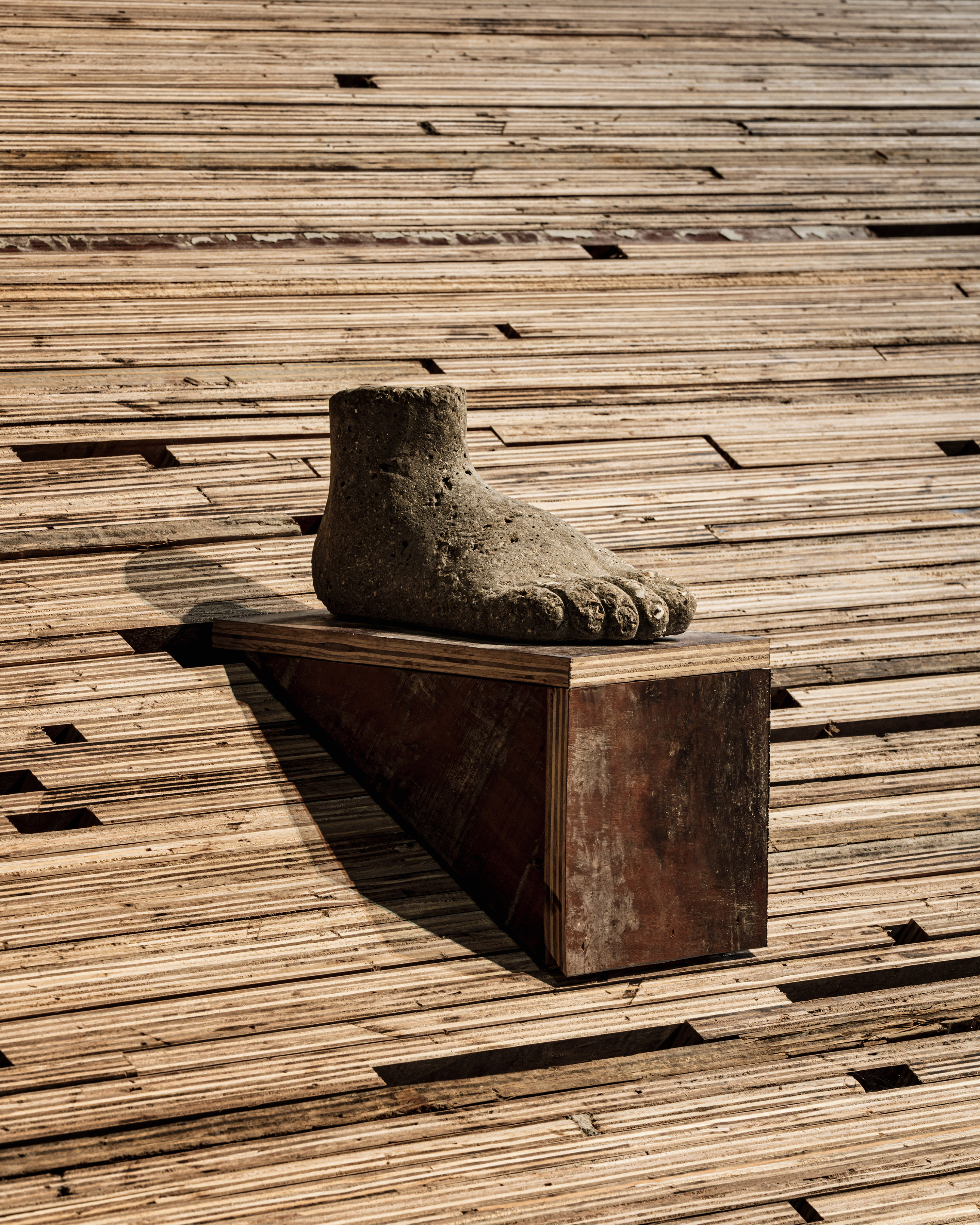
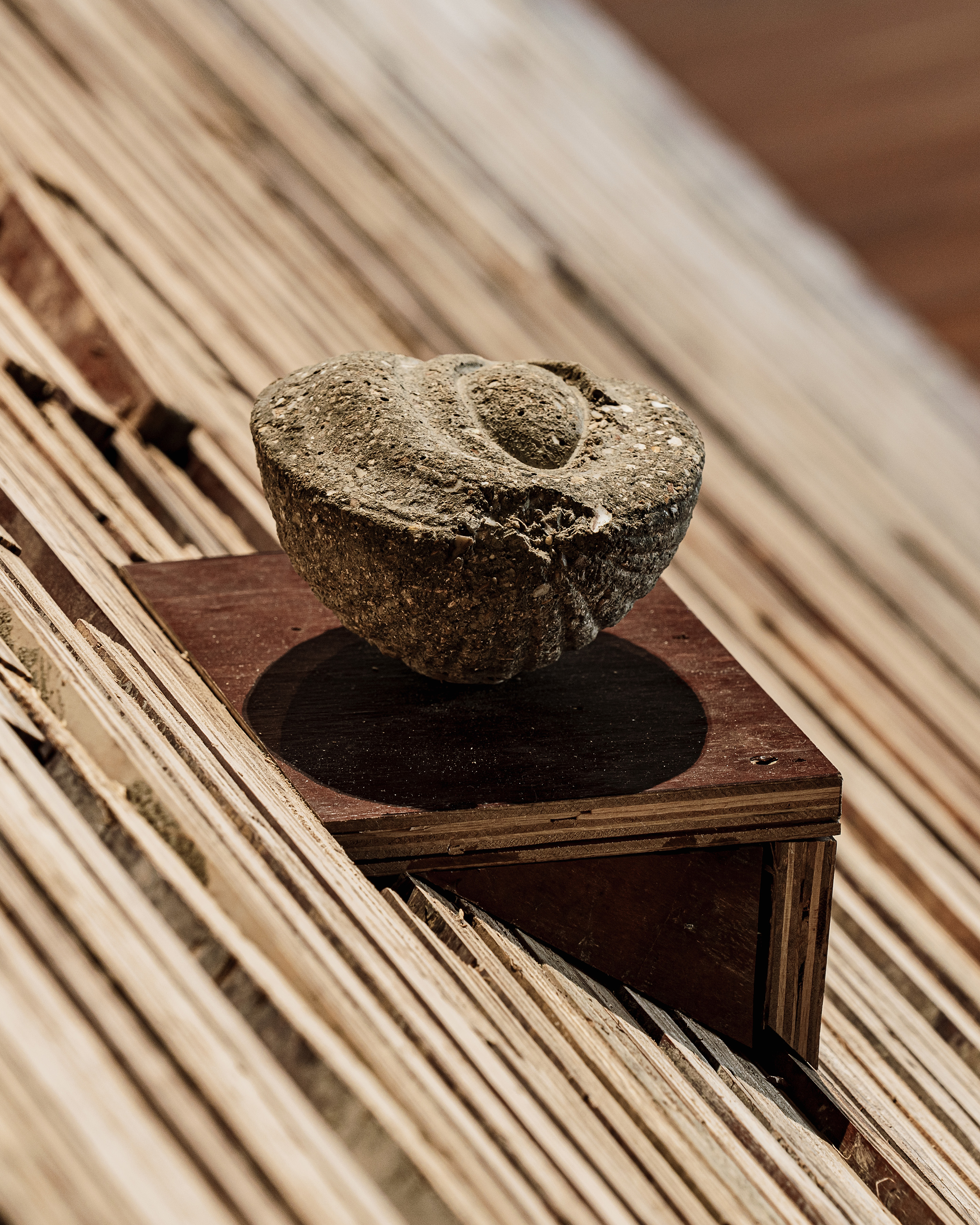 Foot, 22.9 x 9.6 x 12 cm.
Foot, 22.9 x 9.6 x 12 cm.Eye, 12.6 x 10.7 x 7.4 cm.

 Hand, 21.5 x 9.9 x 4.8 cm.
Hand, 21.5 x 9.9 x 4.8 cm.Ear, 10.6 x 7.3 x 4.5 cm.
This exhibition space is located in a building constructed during the Japanese colonial period. The floor features a unique glass window that reveals its underground structure. Inside, I placed two blocks made of sanhé soil with varying thicknesses, their forms inspired by stone steles used as mile markers along embankment. The ceramic-like cracks on their surfaces show waterways from a 1941 map of Madou and Jiali, intertwined with the current road network.

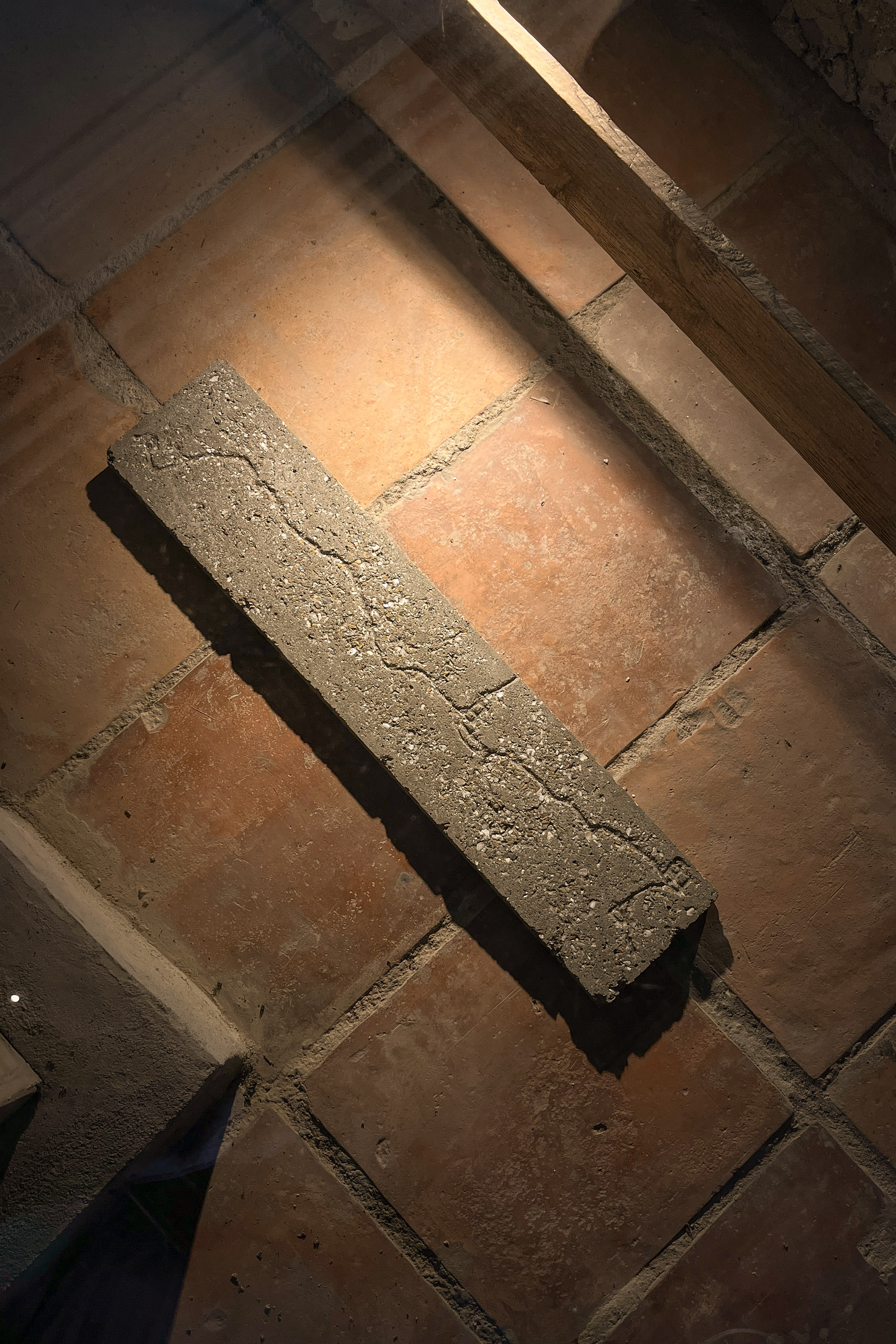

Waterways from a 1941 map of Madou and Jiali , 60.2 x 13.2 x 2.8 cm.

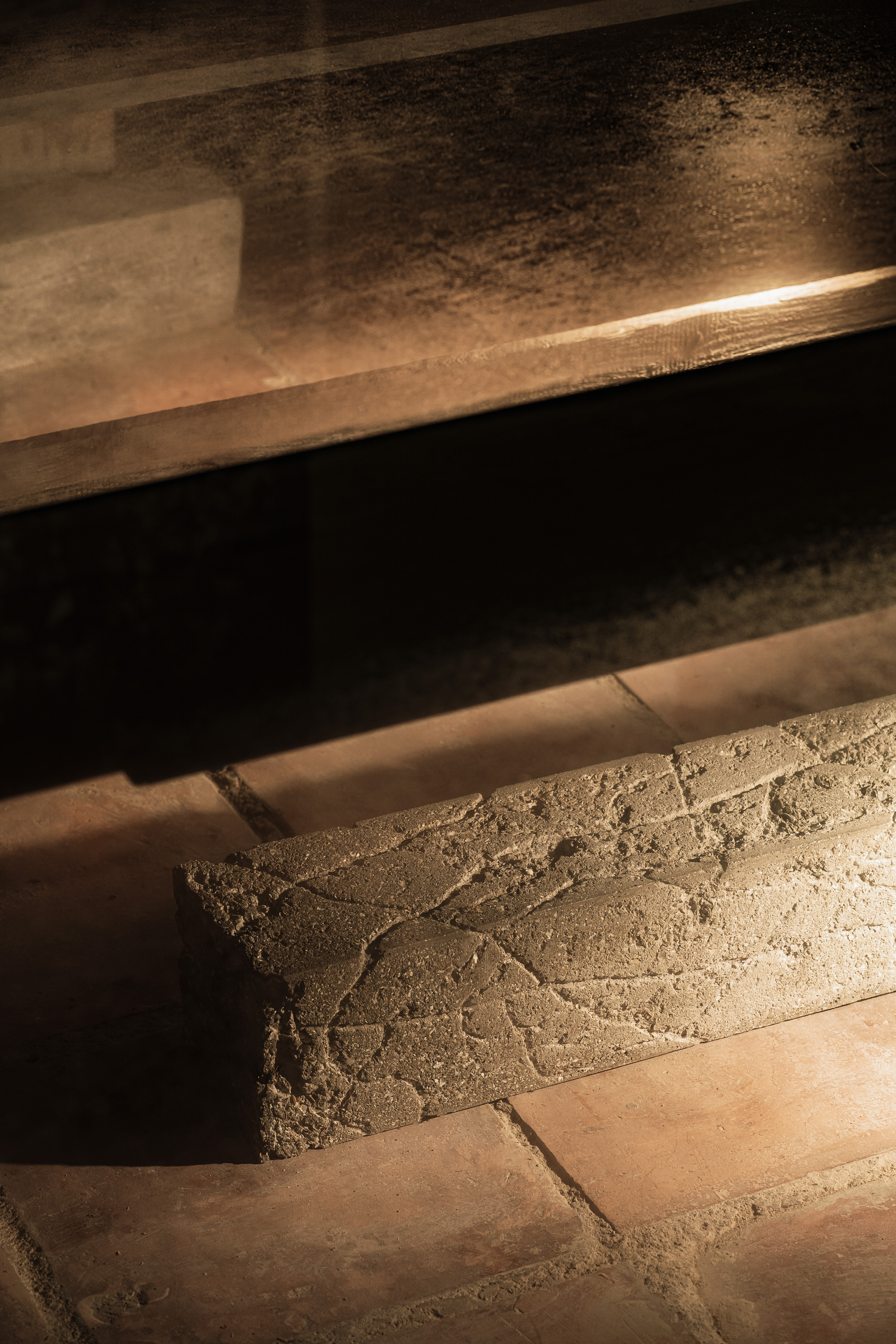
The current road network, 13 x 13 x 64 cm.
The artwork includes three sketches rendered in pencil and pastel, depicting the oyster farms in Qigu, a water reservoir by the Zengwen River’s watermelon fields, and Water Gate No. 4 on the Madou Branch of Chianan Irrigation Canal. The paper is folded into a container and then unfolded for display.


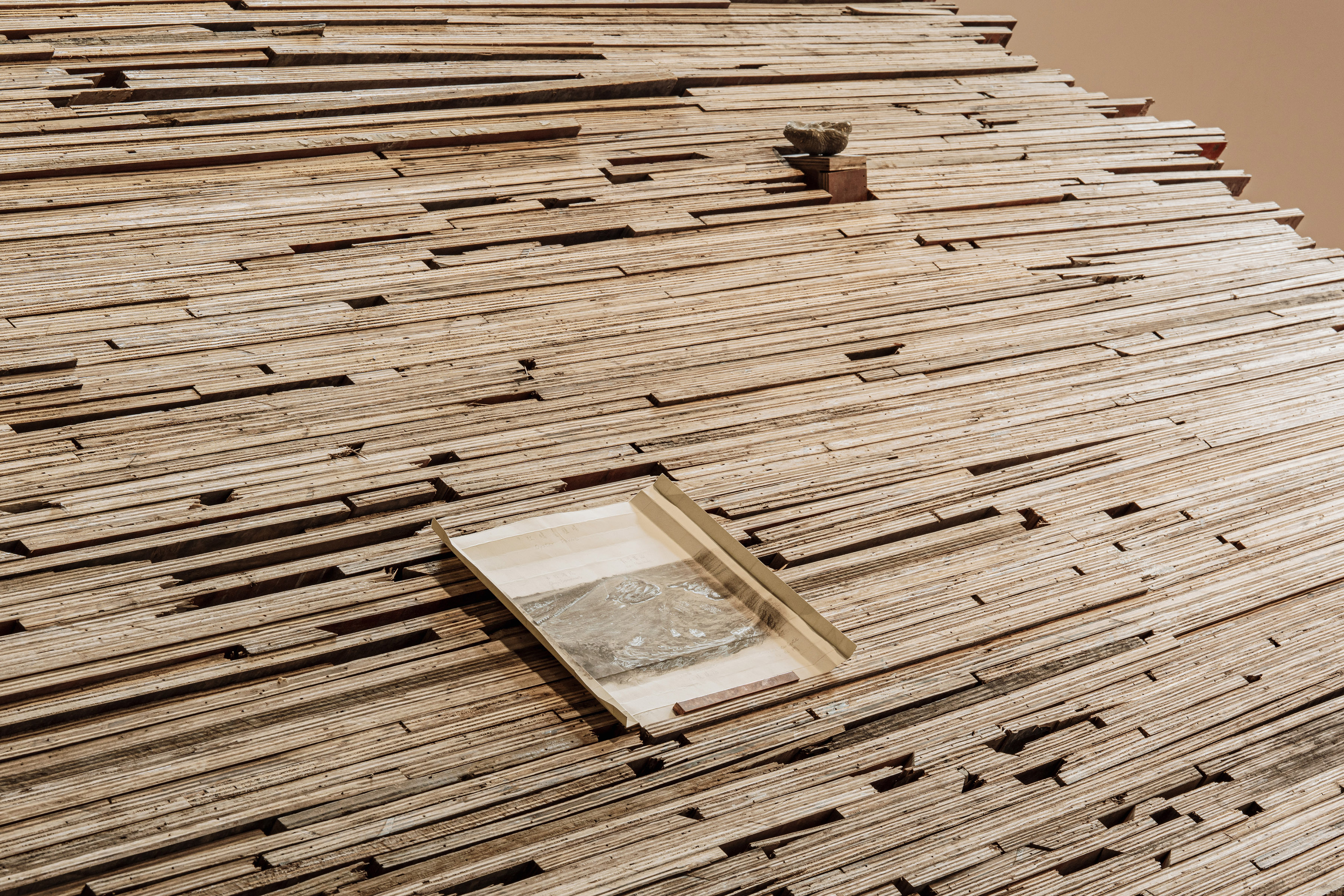


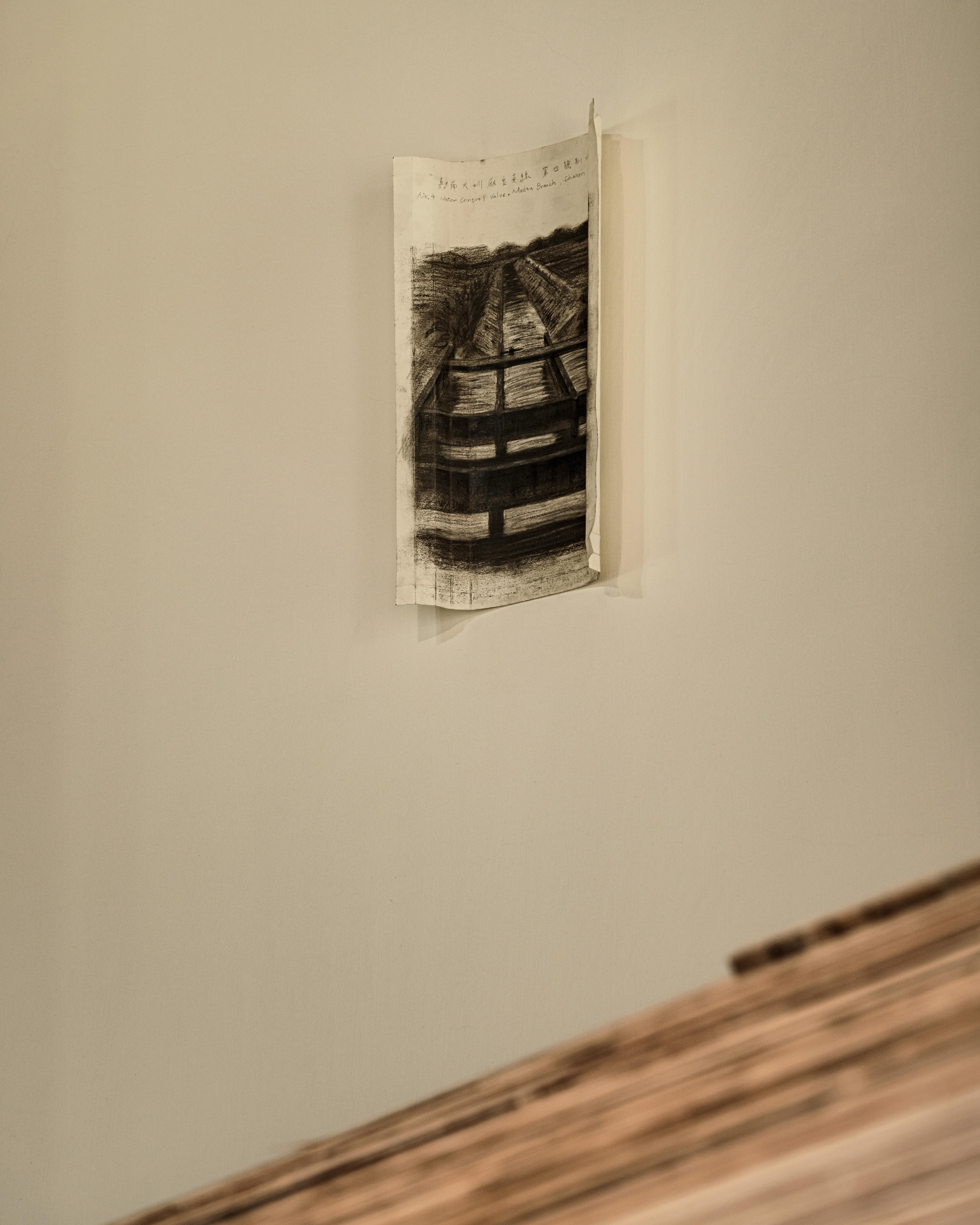
-
Technical Execution|Yang Kian Sam, Kuo En Shuo, Wei Po Jen Special Thanks|Maggie Pan, Tang Ya Wen, Hou Wen Yung
Technical Execution|Yang Kian Sam, Kuo En Shuo, Wei Po Jen Special Thanks|Maggie Pan, Tang Ya Wen, Hou Wen Yung
-
技術執行|楊健生、郭恩碩、魏柏任
特別感謝|潘美君、湯雅雯、侯文詠
技術執行|楊健生、郭恩碩、魏柏任
特別感謝|潘美君、湯雅雯、侯文詠

-
APR. 25 - JUL. 27 2025
-
Supervisor|Cultural Affairs Bureau, Tainan City Government
Organizer|Tsung-yeh Artist Village
Visual Design|iiisland Studio
Video Production|Chen Sheng Hue
Photographer |dulub studio
Myriad Threads
Tsung-yeh Arts and Culture Center Red-Brick Office C Room / Tainan / TaiwanAPR. 25 - JUL. 27 2025
-
Supervisor|Cultural Affairs Bureau, Tainan City Government
Organizer|Tsung-yeh Artist Village
Visual Design|iiisland Studio
Video Production|Chen Sheng Hue
Photographer |dulub studio
